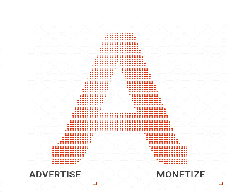Day 13: IAS 38 – Intangible Assets
As we continue our journey through the world of International Financial Reporting Standards (IFRS), we arrive at Day 13, where we delve into the intricacies of IAS 38, Intangible Assets. In this post, we will explore the principles of recognition and amortization of intangible assets, as well as the distinction between internally generated and acquired intangibles.
Introduction to Intangible Assets
Intangible assets are non-monetary assets that are without physical substance, but have a useful life and are identifiable. Examples of intangible assets include patents, copyrights, trademarks, software, and licenses. Intangible assets can be acquired through purchase, self-creation, or as part of a business combination.
Recognition of Intangible Assets
IAS 38 requires that an intangible asset be recognized if, and only if, it meets the following criteria:
- The asset is identifiable: The asset must be separable from the entity, or arise from contractual or other legal rights.
- The asset is controlled by the entity: The entity must have the power to obtain the future economic benefits from the asset.
- The asset is expected to generate future economic benefits: The asset must be expected to generate cash flows or other economic benefits for the entity.
- The cost of the asset can be measured reliably: The cost of the asset must be capable of being measured with sufficient reliability.
Initial Measurement of Intangible Assets
The initial measurement of an intangible asset is typically at cost, which includes the purchase price, plus any directly attributable costs, such as legal fees and registration costs. If an intangible asset is acquired as part of a business combination, its initial measurement is at fair value, as determined by the acquirer.
Amortization of Intangible Assets
Intangible assets with a finite useful life are amortized over their useful life, using a method that reflects the pattern of benefits expected to be derived from the asset. The amortization method can be straight-line, diminishing balance, or units-of-production, depending on the nature of the asset.
The amortization period for an intangible asset is typically determined by its useful life, which can be estimated based on factors such as the length of time the asset is expected to remain in use, the rate of technological change, and the level of maintenance and support required to maintain the asset.
Internally Generated vs. Acquired Intangibles
IAS 38 distinguishes between internally generated intangibles and acquired intangibles. Internally generated intangibles are developed by an entity through its own efforts, such as research and development activities. Acquired intangibles, on the other hand, are purchased or acquired by an entity from another party.
Recognition of Internally Generated Intangibles
Internally generated intangibles are recognized as assets only if they meet the recognition criteria outlined above. The cost of internally generated intangibles includes the costs of development, such as salaries, materials, and overheads, but excludes the costs of research, which are expensed as incurred.
Recognition of Acquired Intangibles
Acquired intangibles are recognized as assets at their acquisition cost, which includes the purchase price, plus any directly attributable costs, such as legal fees and registration costs. The acquisition cost of an intangible asset can be determined using a variety of methods, including the cost approach, the income approach, and the market approach.
Case Study: Recognition and Amortization of Intangible Assets
Suppose a company, XYZ Inc., develops a new software product through its own research and development activities. The development costs total $100,000, and the company expects the software to have a useful life of 5 years. The company also purchases a patent from another company for $50,000, which has a remaining useful life of 10 years.
In this case, XYZ Inc. would recognize the software as an internally generated intangible asset, with a cost of $100,000. The company would amortize the software over its useful life of 5 years, using a straight-line method, resulting in an annual amortization charge of $20,000.
The patent, on the other hand, would be recognized as an acquired intangible asset, with a cost of $50,000. The company would amortize the patent over its remaining useful life of 10 years, using a straight-line method, resulting in an annual amortization charge of $5,000.
Impairment of Intangible Assets
IAS 38 requires that intangible assets be tested for impairment whenever there is an indication that the asset may be impaired. An impairment loss is recognized if the carrying amount of the intangible asset exceeds its recoverable amount, which is the higher of its fair value less costs of disposal and its value in use.
Disclosure Requirements
IAS 38 requires that entities disclose certain information about their intangible assets, including the carrying amount, amortization method, and useful life of each intangible asset. Entities must also disclose any impairment losses recognized during the period, as well as any reversals of impairment losses.
Conclusion
In conclusion, IAS 38 provides a framework for the recognition, measurement, and amortization of intangible assets. The standard requires that intangible assets be recognized if they meet certain criteria, including identifiability, control, and the expectation of future economic benefits. Internally generated intangibles are recognized as assets only if they meet these criteria, while acquired intangibles are recognized at their acquisition cost. The amortization of intangible assets is typically done using a method that reflects the pattern of benefits expected to be derived from the asset.
Bookkeeping Services @ ONE WEB ONE HUB 
Are you looking for a reliable and efficient bookkeeping service to help you manage your financial records? Our team of experienced bookkeepers can provide you with accurate and timely financial statements, as well as assist with budgeting, forecasting, and financial analysis. Contact us today to learn more about our bookkeeping services and how we can help you achieve your financial goals. Please email us at mtfco@onewebonehub.com.












